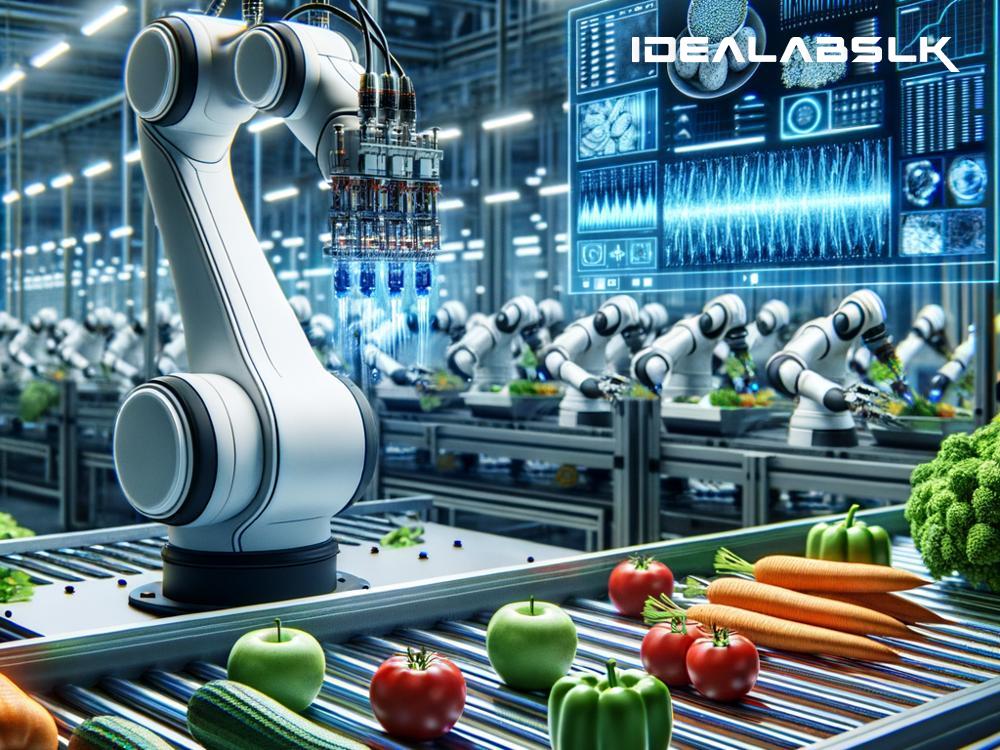AI-Powered Robotics Transforming the Food Processing Industry
In today’s world, where technology grows faster than ever, Artificial Intelligence (AI) and robotics are revolutionizing many sectors, including the food processing industry. You may be wondering, how exactly? Well, let's dive into how AI-powered robotics is changing the game in creating safer, faster, and more efficient food processing methods.
The Rise of AI-Powered Robotics in Food Processing
Food processing is an essential link between the farm and our forks—it involves everything from cleaning and cutting to cooking and packaging our favorite foods. For many years, this process was labor-intensive and time-consuming. However, the introduction of AI-powered robotics has started a new era in food production, focusing on automation and precision.
What Makes AI-Powered Robotics Stand Out?
AI and Machine Learning: At the heart of AI-powered robotics are artificial intelligence and machine learning. These technologies allow robots to learn from data and improve their actions over time, much like how we learn from experience. In food processing, this means robots can adapt to handle different types of foods or recognize when a fruit or vegetable doesn't meet quality standards, all on their own.
Speed and Efficiency: AI robots can work tirelessly, 24/7, without the need for breaks or shifts changes. This relentless pace ensures that food processing is not only faster but also more cost-effective in the long run. It's like having a super-efficient buddy in the kitchen who never gets tired.
Precision and Waste Reduction: One of the most significant benefits of using AI-powered robotics is their ability to be incredibly precise. This precision cuts down on waste—a big issue in food processing. For instance, when peeling or cutting, robots can adjust their methods to remove as little as possible, preserving more of the edible parts of fruits and vegetables.
Enhancing Food Safety: Perhaps one of the most critical aspects of food processing is ensuring the safety and cleanliness of the food. AI-powered robots can be equipped with sensors that detect contaminants or impurities that are invisible to the human eye, making our food safer to eat.
Real-Life Applications of AI-Powered Robotics in Food Processing
Robotic Chefs and Kitchen Assistants: Imagine walking into a restaurant where your meal is prepared by a robotic chef that can cook with precision every single time. These robots can follow recipes to the letter, ensuring consistency in food quality and taste.
Sorting and Packaging: AI-powered machines are now being used to sort through produce, selecting the best pieces and packaging them at incredible speeds. This not only speeds up the process but also reduces the possibility of human error, ensuring that only the freshest and highest quality products make it to the market.
Precision Farming: Even before the food reaches the processing facility, AI can help. Drones and robots equipped with AI can monitor crop health, precisely apply fertilizers or pesticides, and harvest crops at the perfect time.
Challenges and Considerations
Despite the exciting advancements, integrating AI-powered robotics into food processing doesn't come without its challenges. The initial investment can be high, which might be a hurdle for small-scale producers. There's also the concern of job displacement, as robots take over tasks traditionally performed by humans. Therefore, there needs to be a balance between utilizing new technologies and ensuring the workforce is trained for the jobs of tomorrow.
The Future is Here
AI-powered robotics in food processing is not just a futuristic concept—it's happening now, and it's transforming the industry in remarkable ways. From enhancing food safety to reducing waste, the benefits are significant.
As we look ahead, it's clear that technology will continue to play a pivotal role in how we process, package, and even consume food. For food producers, staying ahead of these technological advancements will be key to remaining competitive in an ever-evolving market. For the rest of us, it means we can look forward to food products that are safer, fresher, and produced sustainably, thanks to these high-tech helpers in the food processing industry.
So, the next time you bite into your favorite snack or dish, it might just have been prepared with a little help from an AI-powered robotic friend, showcasing the delicious blend of technology and culinary art.

